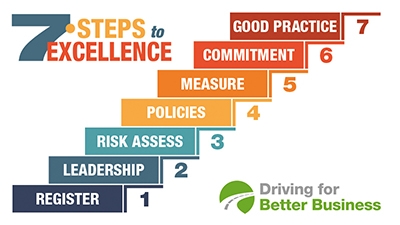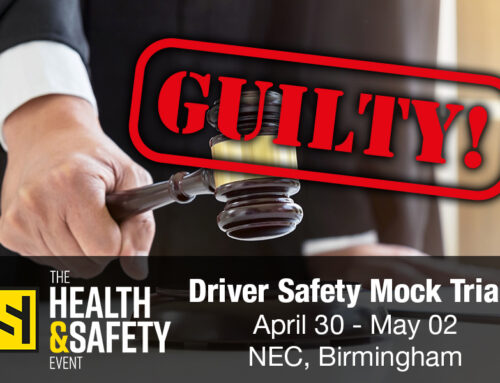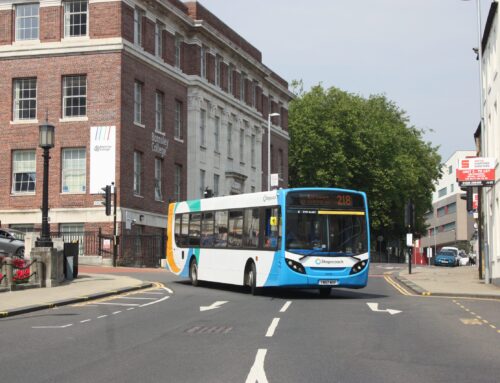If there’s one overriding change that John Pryor, chairman of ACFO, has witnessed in over 30 years in fleet management, it’s the advent of ‘Mobility’ – the holistic management of business travel.
Now, as never before, he says, it is incumbent on employer – and employee – to consider business travel in the broadest terms possible by asking a series of key questions. Is the journey necessary in the first place and if so, what is the most cost, time, safety and CO2-efficient way of achieving it?
Will it be by company car, by claiming mileage in their own ‘grey fleet’ vehicle, by public transport, hire car, retail or business car club, bicycle or on foot – or will a combination of several of the above provide the best solution?
“Nowadays the whole area is far more complex than it ever was before,” says Pryor, who is also fleet and travel manager at Arcadia Group. “Increasingly, as Mobility takes over, companies are starting to say ‘Actually, I want to know what the entire cost of the journey is, how they do that journey mile. Is there an approach that will save us money, and be more environmental? The job of the fleet manager is weighing up all the options to get the very best result all round.”
Pryor says that in 2018, company travel policy has had to adapt to major, shifting societal changes too. Many millennials no longer even wish to run a car and be responsible for it: “They know – perhaps better than older generations – that there are many more ways of approaching the issue of travel.
“They might be asking ‘why am I going to accept a company car – and be heavily taxed on it – when I don’t really need it?’ Maybe their partner already has a car that they can use for business and it’s there for weekends too. They might live in a city where it’s hard to park an additional vehicle so they don’t want a company car sitting outside, especially if they have to pay £200 for a residents parking permit, and perhaps they already have a train season ticket for getting into work. Things are changing fast.”
Pryor says that this is where the flexibility of company car club schemes – either business or retail, where employees dip into a publicly-available pool of vehicles – can sometime make sense as part of the business travel solution
He says that car club schemes may also be attractive to workers who aren’t eligible for a company car, but who value being able to dip into a car club, especially one that might be employer-subsidised.
“The key,” says Pryor, “Is that as a fleet manager – and as an employee – you constantly have to look at all the options and weigh them up on a case by case basis.”
He says that the decreasing value of the company car – once viewed as an important perk – has had an effect too. “It no longer benefits you as it used to, when the more miles you drove, the less it cost you.”
Nevertheless, he adds, there’s ‘talk’ that the current AMAP (Approved Mileage Allowance Payment) system ‘still encourages people to do extra miles’ in grey fleet vehicles, adding: “Despite the value of the grey fleet, having a more fuel-efficient company car can still sometimes be better overall, especially as the current system can encourage someone to buy a bigger (grey fleet) car than they really need.”
Helping employees choose the ‘right’ vehicle for the job is therefore important, especially when it comes to fuel efficiency and safety, says Pryor.
“Company car fleets have helped enormously on this front,” he says. “They used to account for 50 per cent of car sales in the UK (slightly less now) and by insisting on cars with the best safety equipment, this helped drive the safety agenda in the UK, with wider benefits for all.
“But we are still pushing for safety equipment – including things like Head Up Displays, emergency braking systems, blind spot warning devices and so on – not to be taxed as a benefit,” says Pryor. “It’s hard to work out but there is an important distinction to be made between taxing a company car user for something like a sunroof and something that will prevent an accident. Safety should not be taxed and we continue to campaign on this.”
According to Pryor, no matter which form of self-drive transport employees use, driver discipline and training are still essential. “As well as having clear travel policies in place and sticking to them, another area we’re keen to stress the importance of, at ACFO, is the company car handover,” he says.
“Today, it can easily take 45 minutes to hand over a new car if it’s packed with all the latest ADAS equipment and there is a tendency for people to say ‘I’m too busy for that, hand me the keys’. That’s wrong, and something we’re keen to address at ACFO. Safety aids are built in for a reason but if the driver isn’t fully aware of how to use them, society won’t see the maximum benefits.
“I saw a report showing that there are now over 50 different acronyms for safety applications in cars, partly because manufacturers use different names for exactly the same piece of kit. We need to agree common names for similar safety devices, making them simpler to understand and operate.”
Even driver aids as basic as reversing warning systems are ‘invaluable’, says Pryor. “Cars are generally getting bigger, making them harder to manoeuvre in parking spaces that have remained the same size. This leads to parking dents that can be very expensive indeed; gone are the days when you can just knock damage out; it often requires an entirely new part to be fitted, so a few hundred pounds on reversing sensors might represent good value. Anything you can do to prevent collisions – at low or high speed – is worthwhile.”
Pryor says that there will continue to be a ‘strong’ future for the grey fleet, but cautions employers that they must oversee it responsibly. “Grey fleet can be part of a properly structured Mobility programme but it must be managed in line with everything else. It’s not something you can say ‘I’ve washed my hands of’ just because an employee is driving their own vehicle. You have to be aware, as an employer, that your hands are just as dirty as they ever were!
“Companies are always responsible for their employees and for their business mileage, after all. They must tell employees ‘if you want to use your own car you must follow these criteria’ and set out what they allow people to do with terms and conditions and a handbook, just as you would in a company car.
“If, God forbid, there is an accident and someone is hurt, you could be called into court and asked ‘why did you let this happen?’ A driver was on your business, he’s in a 28 year-old car, it’s never been serviced, it’s got no MOT, it’s got four bald tyres and you’ve killed a mother on a zebra crossing because he was on the phone. What processes did you have in place to safeguard against this?
“This is why, as a company, you must always have processes in place, and stick to them. That person is representing you on business. Nobody has yet come up in court under the Corporate Manslaughter Act in this scenario but as soon as this does happen, everyone will take a sharp intake of breath and dust down their policy files. But it might be too late.”
Pryor says that companies need to be on top of their business insurance too. “If someone is driving around on company business in their own car and they hurt someone, the insurer will want to go after someone who has some money – and if the employee isn’t even keeping his car maintained he’s hardly likely to have any. If he is on company business and the company omitted to do something legally, the insurer will go after the company for gross negligence instead.”
Adds Pryor: “At the end of the day you should not be driving on the road in an illegal car, but we know that people do so. In this time of austerity, if you’ve got a grey fleet car and suddenly you have a burst tyre, do you put a reconditioned or, worse, a part-worn tyre on because that’s only going to cost you £30 or do you put a proper tyre on for £300? With a company car you would not have to worry because it’s covered under the agreement. That is why grey fleet sometimes has a bad name because some people take the 45 pence per mile and run around in very old, polluting cars. This can all be avoided through effective management.”
Pryor says that the explosion of PCP has changed the landscape for fleet managers, but that it is important for employees to carry out background research, before taking the plunge. “Employees are saying ‘I’m paying more and more tax in my car therefore if I get this cash allowance, I can go and get a slightly nicer car because it’s going to cost me less’.
“Unfortunately I don’t always agree with that because they might not fully appreciate the whole financing of a company car versus a private car. Often, we find they haven’t taken account of the deposit they have to pay, which has a major impact on the overall cost over three years. And what happens if they start to creep over their mileage allowance? They could find they can’t even afford to run a PCP car if that happens, which isn’t an issue with a company car.”
Pryor cautions that employees have also been caught out by large repair bills when they return PCP cars, if the vehicle has dents and scratches. “A big bill at the end of the term can change the entire value of a PCP deal,” says Pryor. “It’s important to do your sums first.”
PCP deals don’t enable businesses to relax, either, says Pryor. “Did the employee buy a maintenance package with the PCP – or did they decide not to? Is the car being properly maintained and how do you, as an employer, know, if you’re not keeping a proper record?
However travel plans – and Mobility – can only be managed effectively when fleet managers receive support at board level, says Pryor.
“When the Corporate Manslaughter Act came in, boards were rightly focused on their travel and fleet responsibilities,” says Pryor. “But it’s slipping down the agenda again. This is another area that we are keen to address at ACFO.”
Fortunately, says Pryor, modern, computer technology makes it far easier to put important processes in place, allowing managers to record, and monitor issues such as insurance, licence checks, grey fleet, company cars and other areas in much more detail.
“When I started – longer ago than I really care to remember! – fleet management was relatively straightforward, if hugely time-consuming.
“Administrative work that took weeks of spreadsheet-ticking can now be achieved in milliseconds thanks to computer apps. But today it’s not just ‘fleet’, or ‘grey fleet’, or ‘travel’, or ‘expenses’. Mobility has entered our lexicon and as society – and business – grapple with change, it’s a word you will hear more and more frequently.”
John Pryor was talking to David Williams, award-winning transport and road-safety journalist, who writes for national publications including the Evening Standard, the Sunday Telegraph and Daily Telegraph.
Keeping accurate records and monitoring your fleet activity is part of the Driving for Better Business 7 Steps to Excellence programme.






